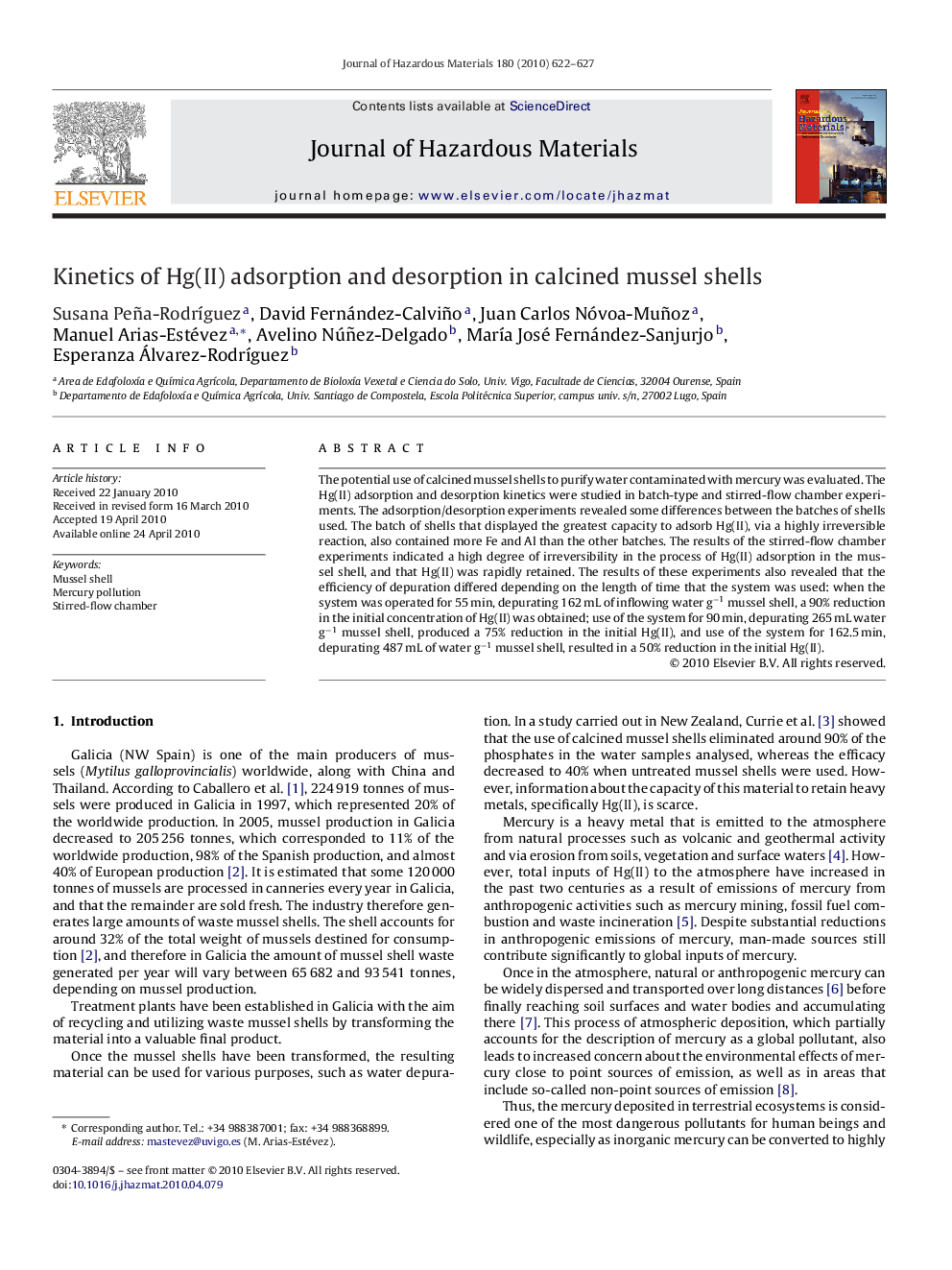| Article ID | Journal | Published Year | Pages | File Type |
|---|---|---|---|---|
| 580105 | Journal of Hazardous Materials | 2010 | 6 Pages |
Abstract
The potential use of calcined mussel shells to purify water contaminated with mercury was evaluated. The Hg(II) adsorption and desorption kinetics were studied in batch-type and stirred-flow chamber experiments. The adsorption/desorption experiments revealed some differences between the batches of shells used. The batch of shells that displayed the greatest capacity to adsorb Hg(II), via a highly irreversible reaction, also contained more Fe and Al than the other batches. The results of the stirred-flow chamber experiments indicated a high degree of irreversibility in the process of Hg(II) adsorption in the mussel shell, and that Hg(II) was rapidly retained. The results of these experiments also revealed that the efficiency of depuration differed depending on the length of time that the system was used: when the system was operated for 55Â min, depurating 162Â mL of inflowing water gâ1 mussel shell, a 90% reduction in the initial concentration of Hg(II) was obtained; use of the system for 90Â min, depurating 265Â mL water gâ1 mussel shell, produced a 75% reduction in the initial Hg(II), and use of the system for 162.5Â min, depurating 487Â mL of water gâ1 mussel shell, resulted in a 50% reduction in the initial Hg(II).
Keywords
Related Topics
Physical Sciences and Engineering
Chemical Engineering
Chemical Health and Safety
Authors
Susana Peña-RodrÃguez, David Fernández-Calviño, Juan Carlos Nóvoa-Muñoz, Manuel Arias-Estévez, Avelino Núñez-Delgado, MarÃa José Fernández-Sanjurjo, Esperanza Álvarez-RodrÃguez,
